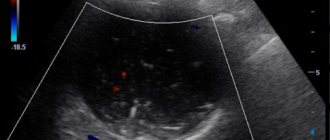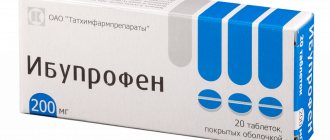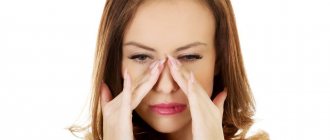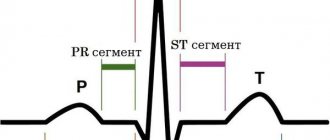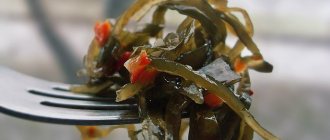Acute cholecystitis - symptoms and treatment
Patients with acute cholecystitis are subject to emergency hospitalization in the surgical department of the hospital. After carrying out the necessary diagnostic measures, further treatment tactics are determined. In the presence of severe complications - perivesical abscess, destructive cholecystitis with peritonitis - patients are subject to emergency surgery after short-term preoperative preparation.[1]
Preparation consists of restoring the volume of circulating blood, detoxification therapy by infusion of crystalloid solutions in a volume of 2-3 liters. If necessary, correction of cardiac and respiratory failure is carried out. Perioperative antibiotic prophylaxis is performed (before, during and after surgery).
The surgical approach is selected depending on the technical capabilities of the clinic, the individual characteristics of the patient and the qualifications of the surgeon. The most commonly used is the laparoscopic approach, which is the least traumatic and allows for full inspection and sanitation.[12]
The mini-access is not inferior to the laparoscopic approach in terms of morbidity and has the advantage of eliminating the need to apply pneumoperitoneum (limit the mobility of the diaphragm).[10] If technical difficulties arise, severe adhesions in the abdominal cavity and diffuse peritonitis, it is more advisable to use a laparotomic approach: upper midline laparotomy, Kocher, Fedorov, Rio Branca access. In this case, the upper midline laparotomy is less traumatic, since in this case the muscles are not intersected, however, with oblique subcostal approaches, the subhepatic space is more adequately opened for surgical intervention.
The operation consists of performing a cholecystectomy. It should be noted that the presence of perivesical infiltrate implies certain technical difficulties in mobilizing the neck of the gallbladder. This leads to an increased risk of damage to elements of the hepatoduodenal ligament.[13] In this regard, one should not forget about the possibility of performing cholecystectomy from the fundus, which allows for more clear identification of the elements of the cervix.[16]
There is also the “Pribrama” operation, which consists of removing the anterior (lower) wall of the gallbladder, suturing the cystic duct in the neck area and mucoclasia (removal of the mucous membrane) by electrocoagulation of the posterior (upper) wall. Performing this operation with a pronounced infiltrate in the area of the bladder neck will avoid the risk of iatrogenic damage. It is applicable for both laparotomic and laparoscopic approaches.
If there are no severe complications of acute cholecystitis, then upon admission of the patient to the hospital, conservative therapy , aimed at unblocking the gallbladder. Antispasmodics, anticholinergics, infusion therapy are used to relieve intoxication, and antibiotics are prescribed.
An effective method is to block the round ligament of the liver with a solution of novocaine. The blockade can be performed either blindly using a special technique, or under the control of a laparoscope when performing diagnostic laparoscopy and under ultrasound guidance.
If conservative therapy is ineffective within 24 hours, the question of radical surgery—cholecystectomy—is raised.
Of no small importance for determining treatment tactics is the time that has passed since the onset of the disease. If the interval is up to five days, then cholecystectomy is feasible; if it is more than five days, then it is better to adhere to the most conservative tactics in the absence of indications for emergency surgery. The fact is that in the early stages the perivesical infiltrate is still quite loose, it can be divided during surgery. Later, the infiltrate becomes dense, and attempts to separate it may result in complications. Of course, a period of five days is quite arbitrary.
If there is no effect from conservative treatment and there are contraindications for radical surgery - severe pathology of the cardiovascular and respiratory systems, five days have passed since the onset of the disease - it is better to resort to decompression of the gallbladder by applying cholecystostomy.[4]
Cholecystoma can be performed in three ways: from a mini-access, under laparoscopic control and under ultrasound control.[9] The most minimally traumatic procedure is to perform this operation under ultrasound guidance and local anesthesia.[3] Single and double punctures of the gallbladder with sanitation of its lumen under ultrasound guidance are also effective.[7] A necessary condition is the passage of the puncture channel through the liver tissue to prevent bile leakage.
After stopping the acute inflammatory process, radical surgery is performed in a cold period after three months. Usually this time is enough for the perivesical infiltrate to resolve.
Description of the disease
Symptoms of the disease appear suddenly
Cholecystitis is an inflammation of the gallbladder. It can be acute, when symptoms of the disease appear suddenly, or chronic, when the disease is present and progresses for the rest of the patient's life.
Calculous cholecystitis or cholelithiasis is a disorder of the processes of bile formation, in which water is excessively absorbed and stones are formed. They can cause serious digestive disorders and biliary colic.
Infection provokes purulent cholecystitis, and its most dangerous type is phlegmonous cholecystitis, in which pus accumulates in the gallbladder.
In combination with gallstones, this leads to severe symptoms and a serious condition for the patient. There is a risk of serious complications from both the digestive system and the liver.
Clinic
The first symptom is cramping pain, which then only intensifies as the condition worsens. In the future, the process progresses and is accompanied by vomiting. There is also a dry, white coated tongue. An external examination reveals a decrease in the mobility of the abdominal wall on the right side, this is explained by the fact that the inflammation extends far beyond the contours of the gallbladder. An increase in temperature is observed, as with any inflammatory process. For mild forms up to 38 degrees, and for severe forms - 40°C.
symptoms of acute cholecystitis
The patient has a constant feeling of chills. The blood test showed significant leukocytosis.
The pathognomaniac symptom of cholecystitis is the Ortner-Grekov symptom. It is characterized by tingling in the hypochondrium. The next Murphy symptom is pain on palpation of the biliary tract during deep inspiration. Obstruction of the bile ducts leads to bloating, belching, nausea, vomiting, and yellowing of the skin. The worsening of these symptoms indicates the progression of the process. It is accompanied by intoxication, dry mouth, and vomiting. Often such symptoms are observed with pancreatitis.
Medicines
Conservative treatment involves the use of broad-spectrum antibiotics (Norfloxacin, Cephalexin, Spiramycin) and intravenous administration of antispasmodics (No-Shpa, Papaverine, Spazmalgon).
To support digestive function, enzyme-containing supplements are used: Pancreatin, Mezim, Festal.
To support liver function, hepatoprotectors are indicated: Gepabene, Chofitol.
Doctors also recommend choleretic agents of natural origin Allochol, Cholenzym and sorbents Activated carbon, Atoxil, etc.
Dyspeptic syndrome
With cholecystitis, dyspeptic syndrome often manifests itself. It makes itself felt by a bitter taste in the mouth and regular bitter belching. This is accompanied by unpleasant sensations of a bloated abdomen, stools are disturbed, and the intestines are distended. Sometimes it starts to feel nauseous, and there may be bitter vomiting. If the gallbladder is in a state of atony or hypotension, then after vomiting relief may occur: relief of heaviness, reduction of pain.
If dyskinesia is hypertensive in nature, then vomiting only makes it worse and the pain becomes stronger. By the amount of bile in the vomit, you can determine the degree of bile stagnation. Its quantity directly depends on this. The greater the stagnation, the more bile there will be in the vomit.
Vomiting occurs after strong experiences, against the background of eating prohibited foods, or due to physical overload.
Our services
The administration of CELT JSC regularly updates the price list posted on the clinic’s website. However, in order to avoid possible misunderstandings, we ask you to clarify the cost of services by phone: +7
| Service name | Price in rubles |
| Ultrasound of the abdominal organs (liver, gall bladder, pancreas, spleen) | 3 800 |
| Ultrasound of the abdominal organs with functional test | 4 000 |
| Gastroscopy (videoesophagogastroduodenoscopy) | 6 000 |
All services
Make an appointment through the application or by calling +7 +7 We work every day:
- Monday—Friday: 8.00—20.00
- Saturday: 8.00–18.00
- Sunday is a day off
The nearest metro and MCC stations to the clinic:
- Highway of Enthusiasts or Perovo
- Partisan
- Enthusiast Highway
Driving directions
Symptoms
In acute cholecystitis, the skin and sclera become yellow
Symptoms of acute phlegmonous calculous cholecystitis are associated with a purulent process, digestive disorders and the appearance of obstructive jaundice.
The disease manifests itself as severe pain in the right hypochondrium, which can spread to adjacent areas of the abdomen and chest. The pain intensifies with breathing, physical activity, and any movement.
Associated symptoms:
- Body temperature is increased.
- Increased weakness, cold sweat.
- The appetite is impaired - as a rule, the patient cannot eat, and fatty foods cause particular disgust.
- Severe vomiting may occur after eating.
- There may be alternation of diarrhea and constipation, with diarrhea the stool is fatty and colorless.
Somewhat later than the general symptoms, signs of jaundice appear - the skin and sclera acquire a yellowish tint, and after 2-3 days the urine turns dark.
As a rule, the patient's condition deteriorates very quickly, so medical attention should be provided as quickly as possible.
Causes of cholecystitis
Cholecystitis is diagnosed more often in women; it manifests itself at the age of 40-50-60 years. The main reasons for its development are:
- Gallstone disease - the presence of dense conglomerates interferes with the outflow of bile, injures the gallbladder tissue, which causes inflammation.
- Poor nutrition - abuse of fried, spicy, fatty foods.
- Heredity is a congenital abnormality of the shape and size of the gallbladder.
- Stress, immune disorders, hormonal imbalances.
- Pathologies associated with a functional disorder of the biliary tract, due to which the organ is not completely emptied.
Cholecystitis in men has the same causes of development, with the exception that in women the use of hormonal contraceptives is added to the causes of pathology.
Features of nutrition for cholecystitis
Nutrition plays an important role in the treatment of cholecystitis. In the acute phase of the disease, against the background of hunger, it is necessary to ensure the correct drinking regime: liquid is given in small portions with a total volume of about one and a half liters per day. After normalization of the general condition, steamed dietary cutlets, soups, cereals, and jelly are introduced into the diet.
Since bile stagnation is the main element in the pathogenesis of cholecystitis, it is necessary to ensure a stable rhythm of bile production and activate the excretory function of the bile ducts. For this, frequent split meals are recommended (5–6 times a day). In this case, the last main meal should be taken no later than 3 hours before bedtime.
The quality composition of food should also be adjusted: increase the proportion of animal protein in the diet, avoiding fatty, fried or smoked foods. Main dishes are steamed; it is also permissible to consume plant foods that are rich in vitamins and do not contain coarse fiber. The consumption of canned, salty, fatty foods, alcohol, as well as dairy products that cause increased gas formation is strictly prohibited.
